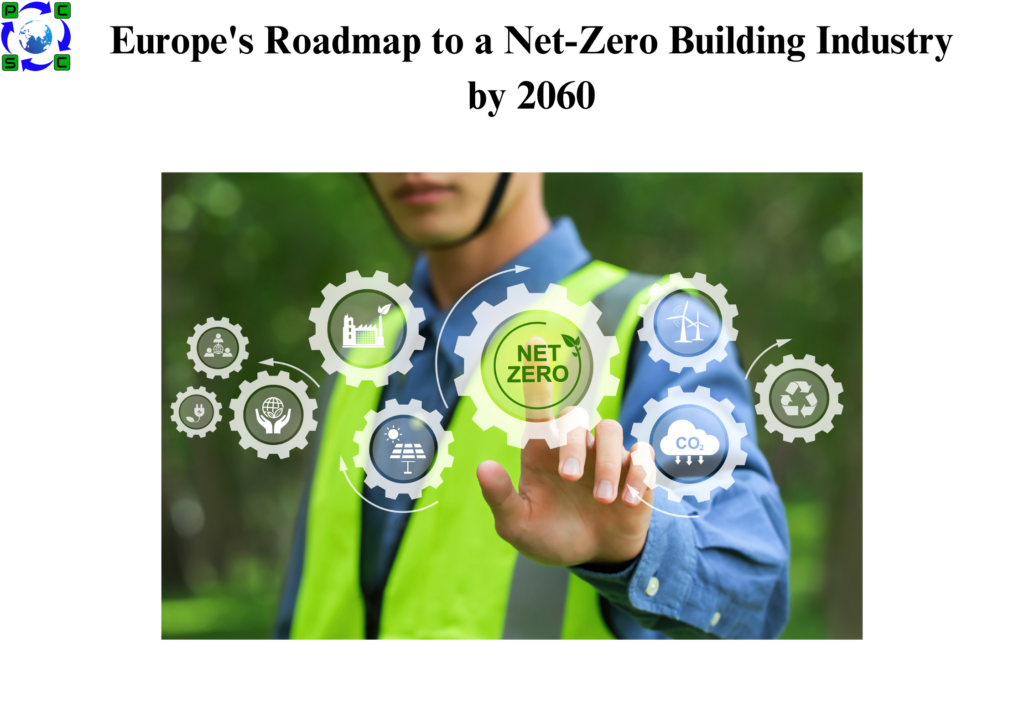 By 2050, the European Union (EU) hopes to achieve its ambitious climate targets and create an economy that is carbon neutral. Changing the energy-intensive building industry, which now generates 36% of greenhouse gas (GHG) emissions and 40% of the EU’s total final energy consumption, is a major issue.
By 2050, the European Union (EU) hopes to achieve its ambitious climate targets and create an economy that is carbon neutral. Changing the energy-intensive building industry, which now generates 36% of greenhouse gas (GHG) emissions and 40% of the EU’s total final energy consumption, is a major issue.
According to new research that uses the High-Efficiency Building (HEB) model to assess different energy demand scenarios up to 2060, addressing the inefficiencies in this sector is essential to reaching a net-zero economy.
The Problem: Current Inefficiencies and Upcoming Development
More than half of the buildings in the EU are older than 50 years, and over 75 percent of the building stock is energy inefficient. These inefficiencies are intended to be addressed by renovation initiatives, such as those supported by the EU’s “Renovation Wave Strategy.” To reach climate objectives, the rate of building rehabilitation, which is now less than 1% per year, must be significantly accelerated. The HEB model presents four scenarios that evaluate how different levels of efficiency improvements and policy changes can influence the sector’s future energy needs.
Additionally, the report predicts that the overall floor space of the EU would rise by 22% by 2060 and 17% by 2050. The tertiary (commercial) building sector, which is predicted to rise by 53% and 74% by 2050 and 2060, respectively, will be the main driver of this expansion.
Important Situations and Reduction of Energy Demand
Four possibilities are evaluated by the HEB model:
- Deep Efficiency: This approach emphasizes cutting-edge efficiency techniques without generating energy on-site.
- Towards Net-Zero: combines on-site energy generation, mostly from rooftop solar, with cutting-edge efficiency techniques.
- Moderate Efficiency: Indicates that current trends are being maintained.
- Frozen Efficiency: Presupposes no upgrades above the present standards and rates of refurbishment.
By 2060, the construction sector’s overall energy consumption may be 97% lower than in 2022 under the Towards Net-Zero scenario. By 2060, space heating—the main source of energy consumption—could be reduced by up to 99%. In order to achieve this almost zero demand level, on-site renewable energy—like rooftop solar panels—will be essential.
Heating and Cooling of Spaces
The building’s most energy-intensive end-use is still space heating. By 2060, the EU’s demand for space heating might be 99% lower under the Towards Net-Zero scenario. The need for space heating will rise by 24% by 2060 under the Frozen Efficiency scenario, however, underscoring the need of legislative action.
Although it accounts for a lesser percentage of overall energy use, space cooling is predicted to increase as a result of climate change. However, cooling demand might be lowered by 92% by 2060 by implementing best practices and on-site energy generation.
The Function of New Construction and Renovation
Renovation rates must rise dramatically in order to accomplish such reductions. According to the report, in order to achieve the challenging goals, refurbishment rates must rise to 3% every year after 2027. Many EU nations are now falling short of this number, and energy consumption may increase if renovations are not hastened.
All new structures built after 2027 must adhere to virtually zero-energy building (nZEB) criteria in addition to modifications. By 2060, all new and renovated buildings must be advanced low-energy or net-zero in order to meet the anticipated energy savings.
Implications for Policy and Prospects
The study’s conclusions highlight how urgently stronger energy efficiency regulations are needed. As demonstrated by the Towards Net-Zero and Deep Efficiency scenarios, lowering energy consumption requires extensive remodelling and cutting-edge efficiency techniques. The EU is unlikely to achieve its long-term carbon neutrality goals without major policy changes.
For legislators, the HEB model offers a clear road map: rapid renovation, stringent adherence to high-efficiency building codes, and broad use of renewable energy technology are required. The construction industry in the EU can only make the transition to a sustainable, net-zero future by 2060 by taking these steps.








 Authorised IMDS & CDX Training & Consulting partner for
Authorised IMDS & CDX Training & Consulting partner for






